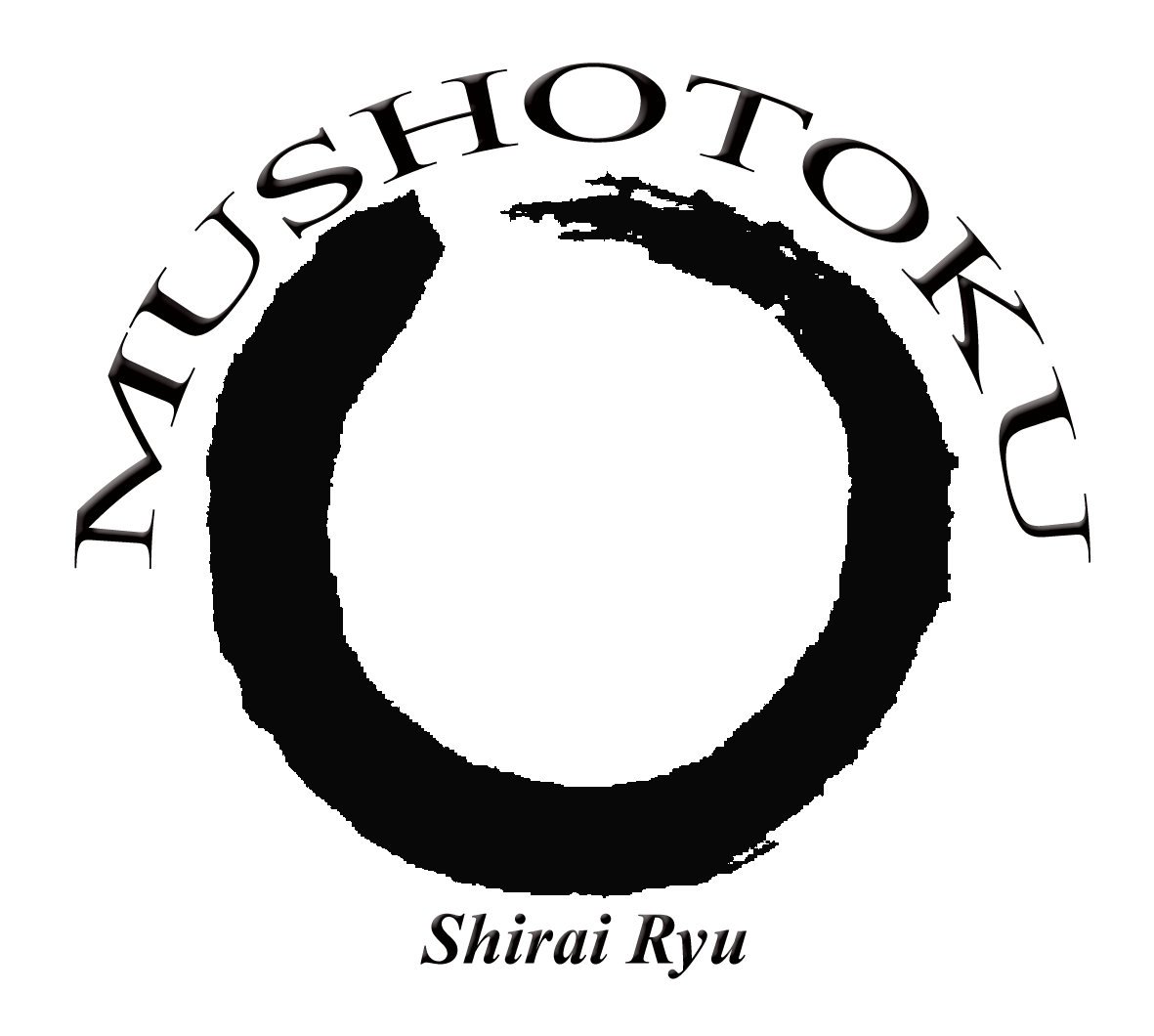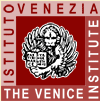Sostegno ATTIVO
Intervista al Maestro Hiroshi Shirai
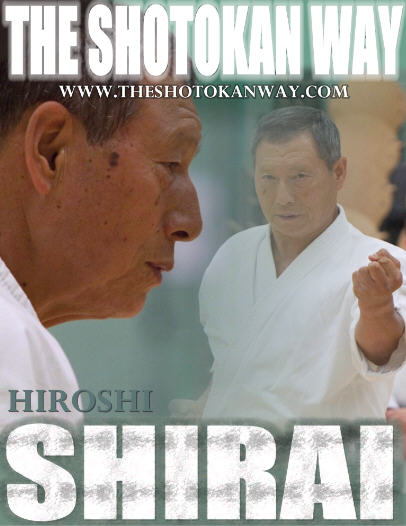
I think it’s perhaps fair to say that in the world of Shotokan Karate, you don’t get a bigger, or more important figure than Hiroshi Shirai. Over the past few years here on TSW, we have been fortunate enough to interview a long list of first rate karateka, many of whom have been central to the development and propagation of karate throughout Japan and the rest of the world. Hiroshi Shirai obviously sits in this category, a figure responsible for many of karate’s international achievements.
I have been, for want of a better term, “chasing” this interview for about four years. When I wrote my “Must Interview” list, Shirai Sensei was of course in there, but many leads led no-where so many times, and we sadly missed the boat on more than one occasion.
When Andy Campbell got in touch to let us know that Sensei Shirai would be travelling to Scotland to teach, this presented a perfect opportunity to interview the legendary Sensei Shirai, and my previously filed list of questions came out.
Sincere thanks to Andy Campbell for organising and conducting the interview, Chris Hawker for use of his awesome photographs and Sensei Shirai for his time. - S. Banfield 2009
Questions by THE SHOTOKAN WAY
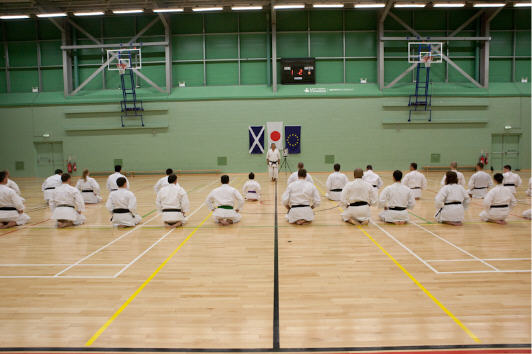
(Andy Campbell) Firstly Sensei, thank you for coming to Scotland and can we please start by saying how grateful we are for you so kindly giving us the opportunity to interview you! Can you tell me Sensei what you expected from Karate when you first started training?
(Hiroshi Shirai) When I started Karate, initially the martial art was for self defence techniques. This is what I went along expecting to learn. Then after about 2 years of training I turned my attention to, and took great interest in, competition. I focused on competition training until 1963. I took part in competitions, first at university level then at senior competition level in the JKA. This was a very exciting time.
After a while my circumstances changed and I came to Italy. I took this opportunity to start to teach. I had to learn how to teach karate first but I always continued with my own personal training. I was teaching traditional karate, self defence karate and I was also teaching competition karate. Over the years with my study of all aspects of karate I began to understand that karate was not just about competition, Karate at its core must be about the self development of human perfection. This realisation has influenced me and this is the focus when I train and teach karate. Karate training must have this purpose in mind for everyone - human progress. I think this objective is far more important than any other aspect.
(AC) You started karate whilst at Komazawa University, and trained with Sensei Nishiyama. What was training like and how do you think Sensei Nishiyama’s Karate and training developed over his life time?
(HS) Sensei Nishiyama’s Karate was very hard karate. It was also very strong karate. Each training session was at least 3 hours long. This was strictly one hour for kihon, one hour for kata and finally, one hour for kumite. Every session was always very hard and intense – this was the way Sensei Nishiyama taught.
When Sensei Nishiyama went to America in 1960, he began to make contact with many people and organisations who taught physical education in the United States. He worked with them to develop how to teach traditional karate to others in an easier way that they would understand. This was very successful and he founded ITKF to continue to teach his way across the world.
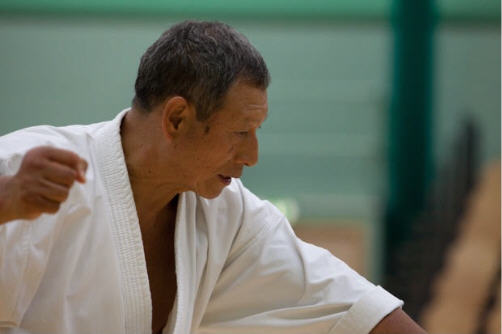
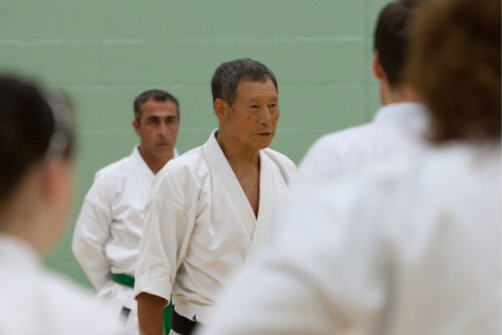
(AC) In 1960 you started on the JKA Instructor’s course. Who were the other Karate Ka on the course with you at the time?
(HS) When I started the JKA Instructor’s Course there were four members in total, myself and three others. One was Mr Nakayama who sadly was unable to walk because of accident during competition. The other 2 instructors are still training but not as full time instructors. It may be that they have already retired because they will be over 70 years old now – like me as I could also retire. After 1 year of the course, Enoeda Sensei joined the rest of us. He had graduated University one year before me but he went to work in his country teaching.
(AC) Teaching on the Instructor Course was an impressive list of senior names. Can you please tell us exactly who taught you whilst on the course?
(HS) Yes. Master Nakayama was the Chief instructor. Then Master Nishiyama – but Nishiyama Sensei went to the United States after six months. There was also Master Kase and Master Sugiura who is now a Chief instructor of the JKA, they were all teaching on the course.
(AC) From those who you have mentioned, who would you say was the most influential during this stage in your karate career?
(HS) I would have to say that the most important and influential learning I had was from Master Kase and Master Nishiyama. This really became apparent when I started to teach Karate in Europe and the United states. I learned so many things myself from them that I could take with me to teach others. So, Master Nishiyama and Master Kase.
(AC) Technically speaking, what improvements and changes did you make to your Karate on the course?
(HS) I first learned very quickly how to do each technique correctly. In preparation for teaching I had to study other people’s karate. I could see many, many weak points. I wanted to change this for the better regardless of what level the karate was to be practiced at. So I then focused on the correct way to teach others. However, most importantly I had to understand how to do my karate – no one else’s but what was right for me, my ability, my feeling, my unique karate.
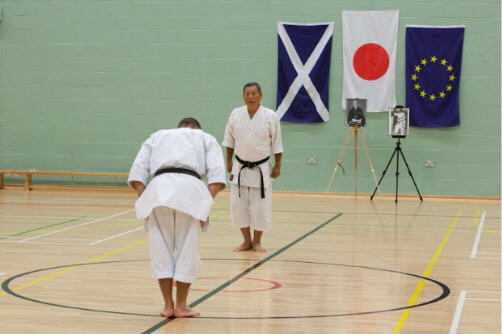
(AC) You spent a very long time being very close to Sensei Kase. Do you remember the very first time you met him? Can you recall your impressions? What were the main points of Sensei Kase’s karate?
(HS) Yes, the first time I saw Kase Sensei was in Japan in 1962 or 63. (Laughs) My first impression was that he looked… rough, very rough but very strong and very natural. This was what impressed me. He was so different, it wasn’t strict “ This way! This way! This way!” but open “Ah yes, your way – sure everything is possible”. (laughs) Kase Sensei was more free and relaxed.
(AC) Would you please share some memories that you may have of Sensei Kase, and possibly share a few fond and/or funny stories that you may have of him?
(HS) Kase Sensei liked good food. I remember one time we went fishing, I caught this very nice fish and I cooked it for Kase Sensei. This made him very happy. Many times I cooked for Kase Sensei. We always had many small plates and plenty of good Sake! These I remember were very good times with Kase Sensei.
(AC) When Sensei Kase passed away, what effect did that have on you?
(HS) Ohh, very much, very much. When Kase Sensei died I lost something very big and very special. I wanted to learn so much more from him.
(AC) You had a wonderful competitive career. How would you describe your fighting style during your competition era?
(HS) I remember each competition was normally not a problem. When I fought with Kano Sensei or Enoeda Sensei I had to do something special to win. I studied strategy and tactics - how and in what way should I engage them, which technique to use, when to use (laughs), how to bring the right timing to the moment. I always had to study tactics because both were senior to me. Kano Sensei I think had four or five more years experience. Enoeda Sensei had two years more experience. I was very young.
(AC) Of all your opponents, who would you say was the most challenging? Would you if possible give us your recollections of the encounter(s)?
(HS) Both Kano Sensei and Enoeda Sensei were equally my most difficult fights. Others who I fought were not so difficult. I fought Kano Sensei one time and I won. Enoeda Sensei I fought four times and out of those 4 fights I won 3 times. The last time we fought I lost he became champion and I was second.
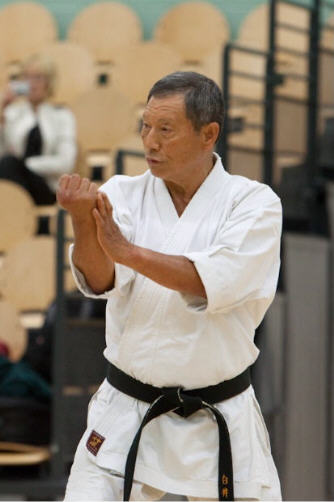
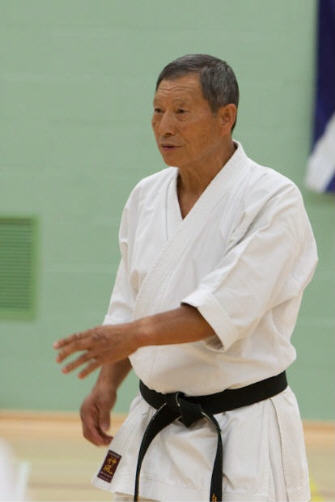
(AC) In 1965, you left Japan to travel and teach. Was it always your choice to leave to Japan?
(HS) We left Japan for a world trip. Kase Sensei, Kano Sensei and Enoeda Sensei. We all left together and visited America, Europe and South Africa.
(AC) In terms of your Kata Sensei, how important is it to keep a close relationship between Kata, Kumite and Bunkai?
(HS) With Kata, many teachers will normally say “Please imagine your opponent when you do Kata.” But I ask how can you imagine your opponent if you don’t know or understand the application of the fighting techniques of the Kata. We must really teach kata bunkai as standard. My way is to teach Kata Bunkai as standard. If a student learns this way they can imagine their opponent better because they will know the Bunkai of the Kata. You must learn the contact form of the Kata – from basic, from Kata, from Bunkai to Kumite. It’s very important. What you then understand is distance. If you can understand distance you can then understand timing. Otherwise, if you just perform the Kata without contact you will never understand distance and timing. This is a very big weak point with how Kata is practiced today.
I always teach contact. I start with Oi-tsuki first, make the technique and finish by making contact. Then when you take one step back, you will know when when you step forward you will easily make contact. You will then understand the basics of distance. But still so many people make mistakes with distance. For me everything starts with the ‘contact moment’ – the right distance, the right form, the right body dynamic all finishing together with Kime on contact.
With this in mind I apply to all Katas the ‘contact moment’. This develops better form and makes it is more easy to imagine how to apply each technique in practice.
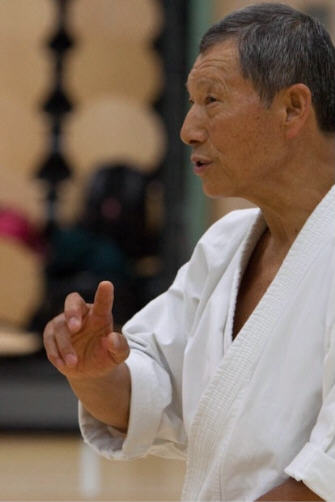
(AC) Can you tell us a little bit more about the Goshindo style of your Karate?
(HS) Goshindo was something I thought about over 40 years ago. I started thinking that Kata was the correct form but the application of the technique is another thing. I learned Kata form from Nishiyama Sensei and many other expert teachers but this was only Kata, I knew that practical application was another thing. So I started to think about this more and more – the application of basic Kihon technique and Kata technique and how to practically use this. I wanted to think beyond the regular applications of Kata. I knew I had to find something new.
(AC) Am I correct in thinking that your experiences in Okinawa had an impact on your development of Goshindo?
(HS) I studied and watched many competitions and other new ways to teach Karate. I saw many weak points and I knew that I had to correct this – how to do punch, how to do block more simply, more towards the Okinawa way to teach – this, I believed was more correct.
(AC) You have also developed your own Kata. How are these different from the Kata in the Shotokan syllabus?
(HS) I wanted to do Shotokan more correctly my way, this became Goshindo. I wanted to develop something without a weak point. I didn’t want to use Shotokan Katas because Shotokan Katas were different. So I created Goshindo Katas because I wanted to use the body shifting, the positions, the blocking techniques more correctly. This was a change from the Shotokan Katas.
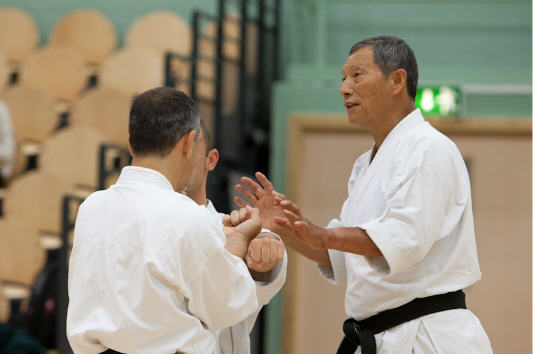
(AC) What would you say are the most important aspects of Goshindo? Can you please give readers an insight?
(HS) Goshindo was created meaning the ‘Way of Self Defence’. However Goshindo goes together with Shotokan. I believe that if you continue to practice Goshindo your Shotokan will improve. That is why I practice Goshindo and why I teach Goshindo. I don’t really speak about it or try to convince people to come to Goshindo training or that their karate will improve. I know for sure that my Shotokan Karate will improve the more I practice Goshindo. One of my students, Claudio Ceruti for example, I know his Shotokan improves with his Goshindo training. Now many of my Black Belt students start their Goshindo training in order to improve their understanding of Shotokan.
(AC) Sensei, what are your future plans for the teaching of Shotokan and the teaching of Goshindo?
(HS) I will continue to practice and to teach both. However, a few years ago I had a very big accident when I went fishing. I fell over 4 feet from a large rock and landed really hard and I broke my back. Then during my recovery I started to be able to kick again. One day I was performing Sochin Kata. On the second yokogeri I completely snapped very deep internal ligaments. This is why I cannot kick so well now. Maegeri chudan is okay, as is yoko and mawashi geri gedan, but I cannot make yoko or mawashi geri at chudan level or above.
However, this is not a problem. I will always practice and teach karate. Now there is more focus on mental energy, body position, power and speed. For demonstration of techniques I have others instructors to help. The students can watch good techniques being performed and listen to my instruction. This is how I teach now and how I will continue to teach Shotokan and Goshindo in the future.
(AC) Many thanks Sensei for this opportunity to interview you. May we wish you all the success for the future!

I think it’s perhaps fair to say that in the world of Shotokan Karate, you don’t get a bigger, or more important figure than Hiroshi Shirai. Over the past few years here on TSW, we have been fortunate enough to interview a long list of first rate karateka, many of whom have been central to the development and propagation of karate throughout Japan and the rest of the world. Hiroshi Shirai obviously sits in this category, a figure responsible for many of karate’s international achievements.
I have been, for want of a better term, “chasing” this interview for about four years. When I wrote my “Must Interview” list, Shirai Sensei was of course in there, but many leads led no-where so many times, and we sadly missed the boat on more than one occasion.
When Andy Campbell got in touch to let us know that Sensei Shirai would be travelling to Scotland to teach, this presented a perfect opportunity to interview the legendary Sensei Shirai, and my previously filed list of questions came out.
Sincere thanks to Andy Campbell for organising and conducting the interview, Chris Hawker for use of his awesome photographs and Sensei Shirai for his time. - S. Banfield 2009
Questions by THE SHOTOKAN WAY

(Andy Campbell) Firstly Sensei, thank you for coming to Scotland and can we please start by saying how grateful we are for you so kindly giving us the opportunity to interview you! Can you tell me Sensei what you expected from Karate when you first started training?
(Hiroshi Shirai) When I started Karate, initially the martial art was for self defence techniques. This is what I went along expecting to learn. Then after about 2 years of training I turned my attention to, and took great interest in, competition. I focused on competition training until 1963. I took part in competitions, first at university level then at senior competition level in the JKA. This was a very exciting time.
After a while my circumstances changed and I came to Italy. I took this opportunity to start to teach. I had to learn how to teach karate first but I always continued with my own personal training. I was teaching traditional karate, self defence karate and I was also teaching competition karate. Over the years with my study of all aspects of karate I began to understand that karate was not just about competition, Karate at its core must be about the self development of human perfection. This realisation has influenced me and this is the focus when I train and teach karate. Karate training must have this purpose in mind for everyone - human progress. I think this objective is far more important than any other aspect.
(AC) You started karate whilst at Komazawa University, and trained with Sensei Nishiyama. What was training like and how do you think Sensei Nishiyama’s Karate and training developed over his life time?
(HS) Sensei Nishiyama’s Karate was very hard karate. It was also very strong karate. Each training session was at least 3 hours long. This was strictly one hour for kihon, one hour for kata and finally, one hour for kumite. Every session was always very hard and intense – this was the way Sensei Nishiyama taught.
When Sensei Nishiyama went to America in 1960, he began to make contact with many people and organisations who taught physical education in the United States. He worked with them to develop how to teach traditional karate to others in an easier way that they would understand. This was very successful and he founded ITKF to continue to teach his way across the world.


(AC) In 1960 you started on the JKA Instructor’s course. Who were the other Karate Ka on the course with you at the time?
(HS) When I started the JKA Instructor’s Course there were four members in total, myself and three others. One was Mr Nakayama who sadly was unable to walk because of accident during competition. The other 2 instructors are still training but not as full time instructors. It may be that they have already retired because they will be over 70 years old now – like me as I could also retire. After 1 year of the course, Enoeda Sensei joined the rest of us. He had graduated University one year before me but he went to work in his country teaching.
(AC) Teaching on the Instructor Course was an impressive list of senior names. Can you please tell us exactly who taught you whilst on the course?
(HS) Yes. Master Nakayama was the Chief instructor. Then Master Nishiyama – but Nishiyama Sensei went to the United States after six months. There was also Master Kase and Master Sugiura who is now a Chief instructor of the JKA, they were all teaching on the course.
(AC) From those who you have mentioned, who would you say was the most influential during this stage in your karate career?
(HS) I would have to say that the most important and influential learning I had was from Master Kase and Master Nishiyama. This really became apparent when I started to teach Karate in Europe and the United states. I learned so many things myself from them that I could take with me to teach others. So, Master Nishiyama and Master Kase.
(AC) Technically speaking, what improvements and changes did you make to your Karate on the course?
(HS) I first learned very quickly how to do each technique correctly. In preparation for teaching I had to study other people’s karate. I could see many, many weak points. I wanted to change this for the better regardless of what level the karate was to be practiced at. So I then focused on the correct way to teach others. However, most importantly I had to understand how to do my karate – no one else’s but what was right for me, my ability, my feeling, my unique karate.

(AC) You spent a very long time being very close to Sensei Kase. Do you remember the very first time you met him? Can you recall your impressions? What were the main points of Sensei Kase’s karate?
(HS) Yes, the first time I saw Kase Sensei was in Japan in 1962 or 63. (Laughs) My first impression was that he looked… rough, very rough but very strong and very natural. This was what impressed me. He was so different, it wasn’t strict “ This way! This way! This way!” but open “Ah yes, your way – sure everything is possible”. (laughs) Kase Sensei was more free and relaxed.
(AC) Would you please share some memories that you may have of Sensei Kase, and possibly share a few fond and/or funny stories that you may have of him?
(HS) Kase Sensei liked good food. I remember one time we went fishing, I caught this very nice fish and I cooked it for Kase Sensei. This made him very happy. Many times I cooked for Kase Sensei. We always had many small plates and plenty of good Sake! These I remember were very good times with Kase Sensei.
(AC) When Sensei Kase passed away, what effect did that have on you?
(HS) Ohh, very much, very much. When Kase Sensei died I lost something very big and very special. I wanted to learn so much more from him.
(AC) You had a wonderful competitive career. How would you describe your fighting style during your competition era?
(HS) I remember each competition was normally not a problem. When I fought with Kano Sensei or Enoeda Sensei I had to do something special to win. I studied strategy and tactics - how and in what way should I engage them, which technique to use, when to use (laughs), how to bring the right timing to the moment. I always had to study tactics because both were senior to me. Kano Sensei I think had four or five more years experience. Enoeda Sensei had two years more experience. I was very young.
(AC) Of all your opponents, who would you say was the most challenging? Would you if possible give us your recollections of the encounter(s)?
(HS) Both Kano Sensei and Enoeda Sensei were equally my most difficult fights. Others who I fought were not so difficult. I fought Kano Sensei one time and I won. Enoeda Sensei I fought four times and out of those 4 fights I won 3 times. The last time we fought I lost he became champion and I was second.


(AC) In 1965, you left Japan to travel and teach. Was it always your choice to leave to Japan?
(HS) We left Japan for a world trip. Kase Sensei, Kano Sensei and Enoeda Sensei. We all left together and visited America, Europe and South Africa.
(AC) In terms of your Kata Sensei, how important is it to keep a close relationship between Kata, Kumite and Bunkai?
(HS) With Kata, many teachers will normally say “Please imagine your opponent when you do Kata.” But I ask how can you imagine your opponent if you don’t know or understand the application of the fighting techniques of the Kata. We must really teach kata bunkai as standard. My way is to teach Kata Bunkai as standard. If a student learns this way they can imagine their opponent better because they will know the Bunkai of the Kata. You must learn the contact form of the Kata – from basic, from Kata, from Bunkai to Kumite. It’s very important. What you then understand is distance. If you can understand distance you can then understand timing. Otherwise, if you just perform the Kata without contact you will never understand distance and timing. This is a very big weak point with how Kata is practiced today.
I always teach contact. I start with Oi-tsuki first, make the technique and finish by making contact. Then when you take one step back, you will know when when you step forward you will easily make contact. You will then understand the basics of distance. But still so many people make mistakes with distance. For me everything starts with the ‘contact moment’ – the right distance, the right form, the right body dynamic all finishing together with Kime on contact.
With this in mind I apply to all Katas the ‘contact moment’. This develops better form and makes it is more easy to imagine how to apply each technique in practice.

(AC) Can you tell us a little bit more about the Goshindo style of your Karate?
(HS) Goshindo was something I thought about over 40 years ago. I started thinking that Kata was the correct form but the application of the technique is another thing. I learned Kata form from Nishiyama Sensei and many other expert teachers but this was only Kata, I knew that practical application was another thing. So I started to think about this more and more – the application of basic Kihon technique and Kata technique and how to practically use this. I wanted to think beyond the regular applications of Kata. I knew I had to find something new.
(AC) Am I correct in thinking that your experiences in Okinawa had an impact on your development of Goshindo?
(HS) I studied and watched many competitions and other new ways to teach Karate. I saw many weak points and I knew that I had to correct this – how to do punch, how to do block more simply, more towards the Okinawa way to teach – this, I believed was more correct.
(AC) You have also developed your own Kata. How are these different from the Kata in the Shotokan syllabus?
(HS) I wanted to do Shotokan more correctly my way, this became Goshindo. I wanted to develop something without a weak point. I didn’t want to use Shotokan Katas because Shotokan Katas were different. So I created Goshindo Katas because I wanted to use the body shifting, the positions, the blocking techniques more correctly. This was a change from the Shotokan Katas.

(AC) What would you say are the most important aspects of Goshindo? Can you please give readers an insight?
(HS) Goshindo was created meaning the ‘Way of Self Defence’. However Goshindo goes together with Shotokan. I believe that if you continue to practice Goshindo your Shotokan will improve. That is why I practice Goshindo and why I teach Goshindo. I don’t really speak about it or try to convince people to come to Goshindo training or that their karate will improve. I know for sure that my Shotokan Karate will improve the more I practice Goshindo. One of my students, Claudio Ceruti for example, I know his Shotokan improves with his Goshindo training. Now many of my Black Belt students start their Goshindo training in order to improve their understanding of Shotokan.
(AC) Sensei, what are your future plans for the teaching of Shotokan and the teaching of Goshindo?
(HS) I will continue to practice and to teach both. However, a few years ago I had a very big accident when I went fishing. I fell over 4 feet from a large rock and landed really hard and I broke my back. Then during my recovery I started to be able to kick again. One day I was performing Sochin Kata. On the second yokogeri I completely snapped very deep internal ligaments. This is why I cannot kick so well now. Maegeri chudan is okay, as is yoko and mawashi geri gedan, but I cannot make yoko or mawashi geri at chudan level or above.
However, this is not a problem. I will always practice and teach karate. Now there is more focus on mental energy, body position, power and speed. For demonstration of techniques I have others instructors to help. The students can watch good techniques being performed and listen to my instruction. This is how I teach now and how I will continue to teach Shotokan and Goshindo in the future.
(AC) Many thanks Sensei for this opportunity to interview you. May we wish you all the success for the future!
